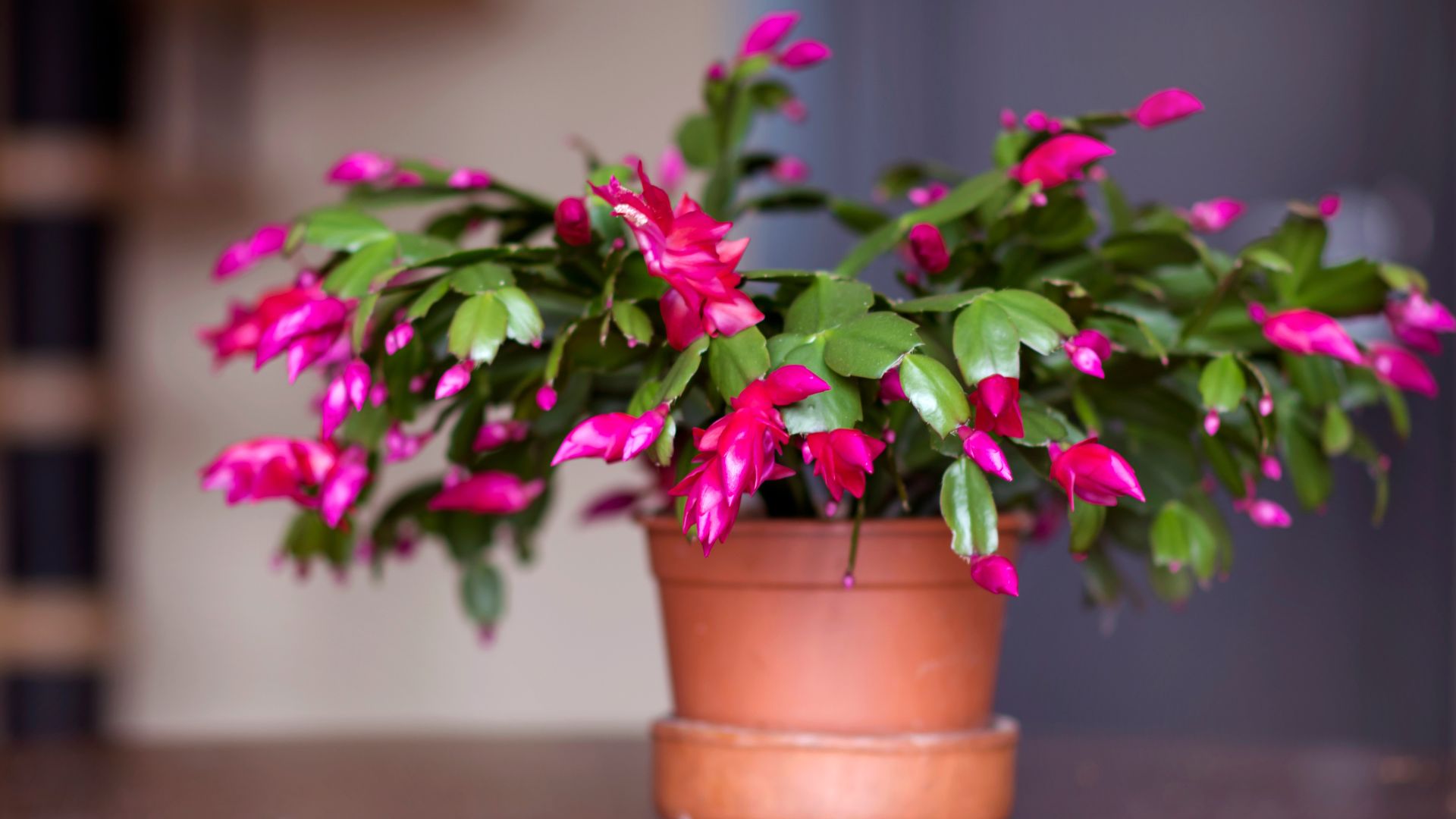
The Christmas cactus, also known as Schlumbergera x buckleyi, is a bright bundle of joy that blooms during the festive holiday season and showers the home with color and allure. This ravishing flower blooms between November and January and forms red and dark pink petals.
In order to get your cacti to bloom, you'll need to know and understand the basics of Christmas cactus care. From watering to fertilizing, there are a few things you'll need to keep in mind when bringing this precious plant into your space. Justin Hancock, a horticulturist from Costa Farms, tells us: "Keeping your Holiday cactus in a bright spot ensures it has the energy it needs to produce lots of flower buds when it’s time to bloom. Periodic fertilization can also help give it a boost by ensuring it has all the nutrients it needs and isn’t hungry."
Christmas cacti actually need very specific conditions to set their flower buds into motion. So, let's dive into the basics of how you can make your Christmas cactus bloom into a colorful ray of elegance. Here is everything you need to know — according to the experts.
How to Make a Christmas Cactus Flower
Understanding your Christmas cacti's needs is key to its flowering success. But what exactly does this entail?
We asked an expert what it takes to make a Christmas cactus flower, and here's what they had to say.
1. Water Your Bloom Correctly

When it comes to how often you should water your Christmas cactus, in this period, it's important to be a little more reserved. The amount of water the plant receives should be limited to promote blossoming. Like most plants, you should reduce the amount of water your plant gets when the summer fades into autumn. November is a good month to cut down on your watering.
Want to know when to water a Christmas cactus? Well, if you put your finger into the pot, the plant should still be moist, but getting into a slower routine of watering means your Christmas cactus can enter dormancy, which is crucial for blooming to take place. An ideal schedule is to water your Christmas cactus every 1-2 weeks and give it a short mist, but only when the top one-third of the soil feels dry to the touch. You'll need to give your Christmas cactus more water when it's in bright light and less when it's in lower light.
Justin Hancock, a horticulturist from Costa Farms, says: "Since this plant is from the rainforest rather than a desert, you don’t want to let it thoroughly dry out. Depending on the amount of water you use, the type of potting mix it’s in, and other factors, watering once a week should do." He adds: "Take care not to overwater; it would rather be slightly dry than too soggy."
2. Encourage Long Nights and Short Days
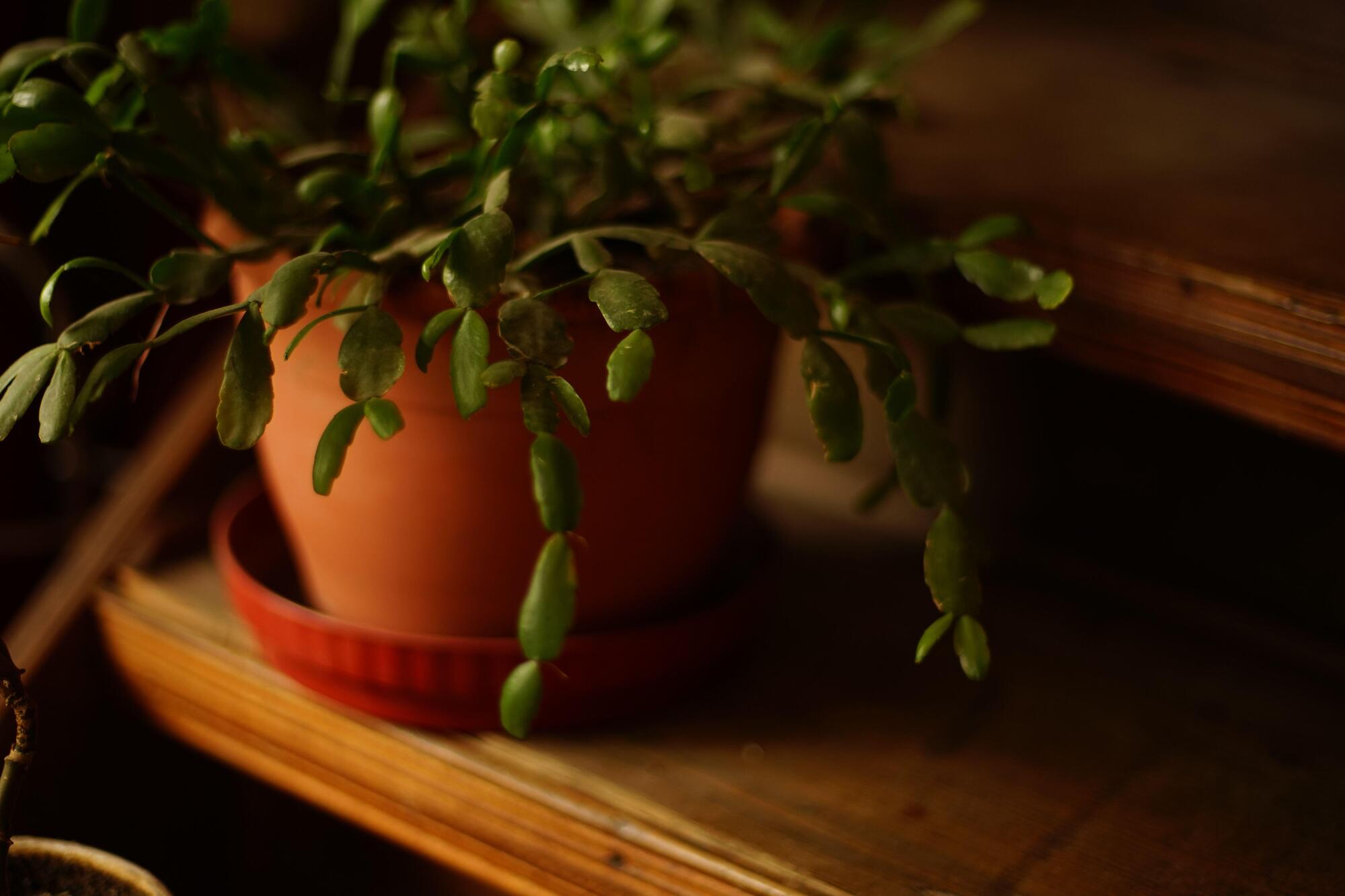
Are you wondering how to fix a limp Christmas cactus, or are you looking to bring it back to its bright, blooming appearance? Did you know that darkness is just as important for your flourishing Christmas cacti as it is with light? Justin tells us: "While growing your Holiday Cactus in a bright spot is key, one quirky thing is that it responds to changes in photoperiod to help induce blooms."
According to the expert, Christmas cacti love long nights and short days, "so giving it bright light for 11 hours or less during the day and then darkness at night for at least 13 hours is key."
Justin says if you have a guest room or another space that you can use to keep the lights off after the sun goes down, then this would be the perfect little spot for your bloom. "If you grow it in a spot where there’s a lot of artificial light at night, then covering it in a dark cloth at dusk and leaving it covered until dawn) can help," Justin adds. "It wants about 8 to 10 weeks of long nights to bud up."
3. Temperature Matters
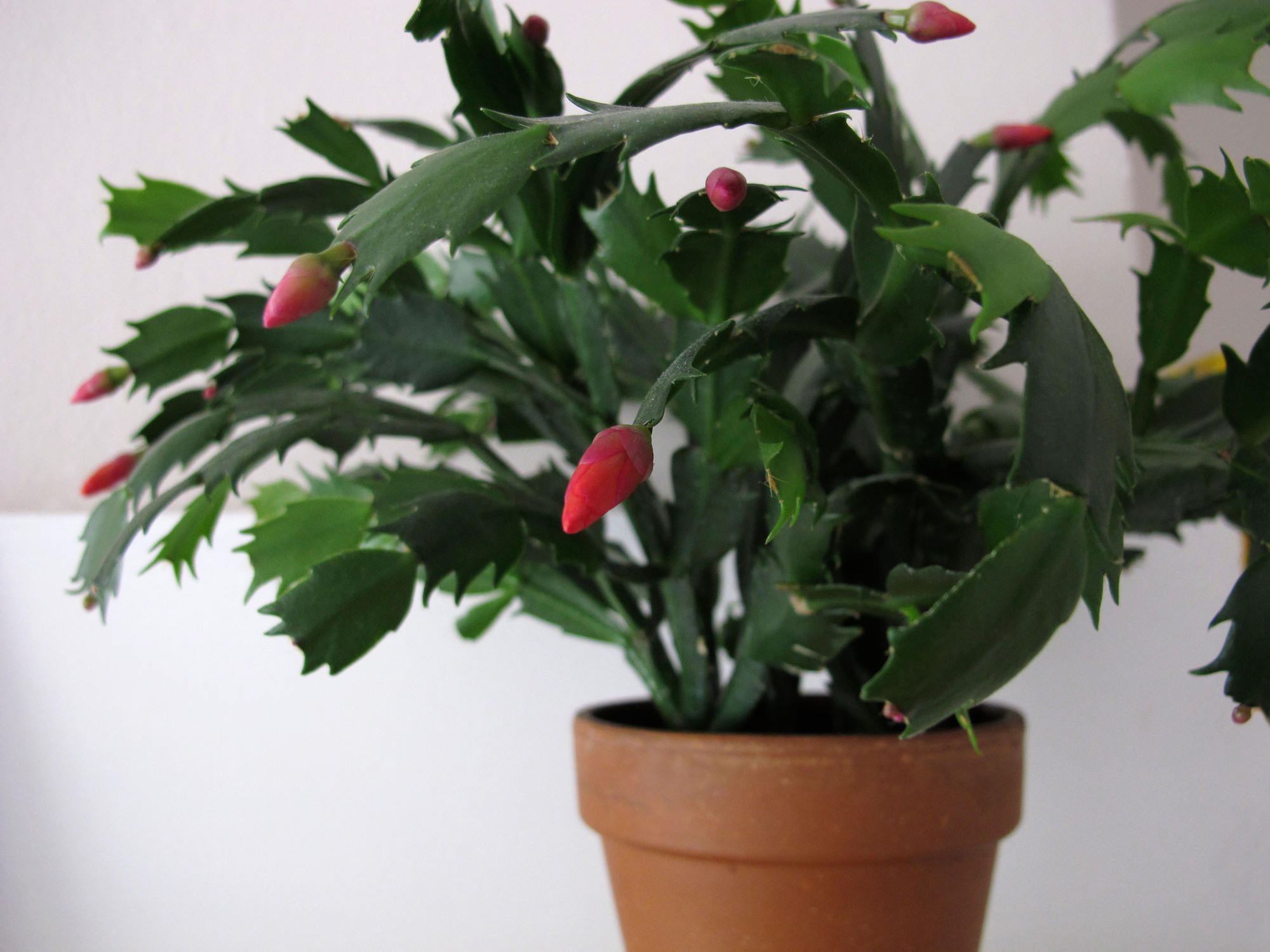
Dark conditions aside, your Christmas cactus will also need cool-ish temperatures. "Giving it cool night temperatures also helps to induce blooms," says Justin. "It can go as low as about 55F at night — but it still wants to be warm during the day."
The expert says if night temperatures don’t drop significantly, you won't need to worry, as this won't necessarily keep your plant from blooming, so long as your plant is healthy and well cared for. But cool nights definitely help with its flowering.
4. Fertilize at the Right Time

Knowing when to fertilize your Christmas cactus will also aid it to bloom beautifully. After your plant has established and is in full bloom, you can fertilize it every month during regular watering from late winter to late summer. The ideal fertilizer would be a 20-20-20 or a 20-10-20 fertilizer — like this Jack's Classic 20-20-20 All Purpose Water-Soluble Fertilizer from Amazon.
"Fertilizing Holiday Cactus with a general-purpose houseplant fertilizer in the spring/summer months is also super helpful," Justin adds. "It’s not super fussy about the type of fertilizer, but personally, I’m fond of time-release fertilizers."
He continues: "They slowly release nutrients to the plant over the course of weeks, so it’s a more natural process for the plant, and there’s less of a chance of accidentally over-fertilizing compared to the products you mix with water. Plus, since it releases nutrients over time, you can get away with doing it as little as once or twice a year."
Why Does my Christmas Cactus Bloom But Not Bud?
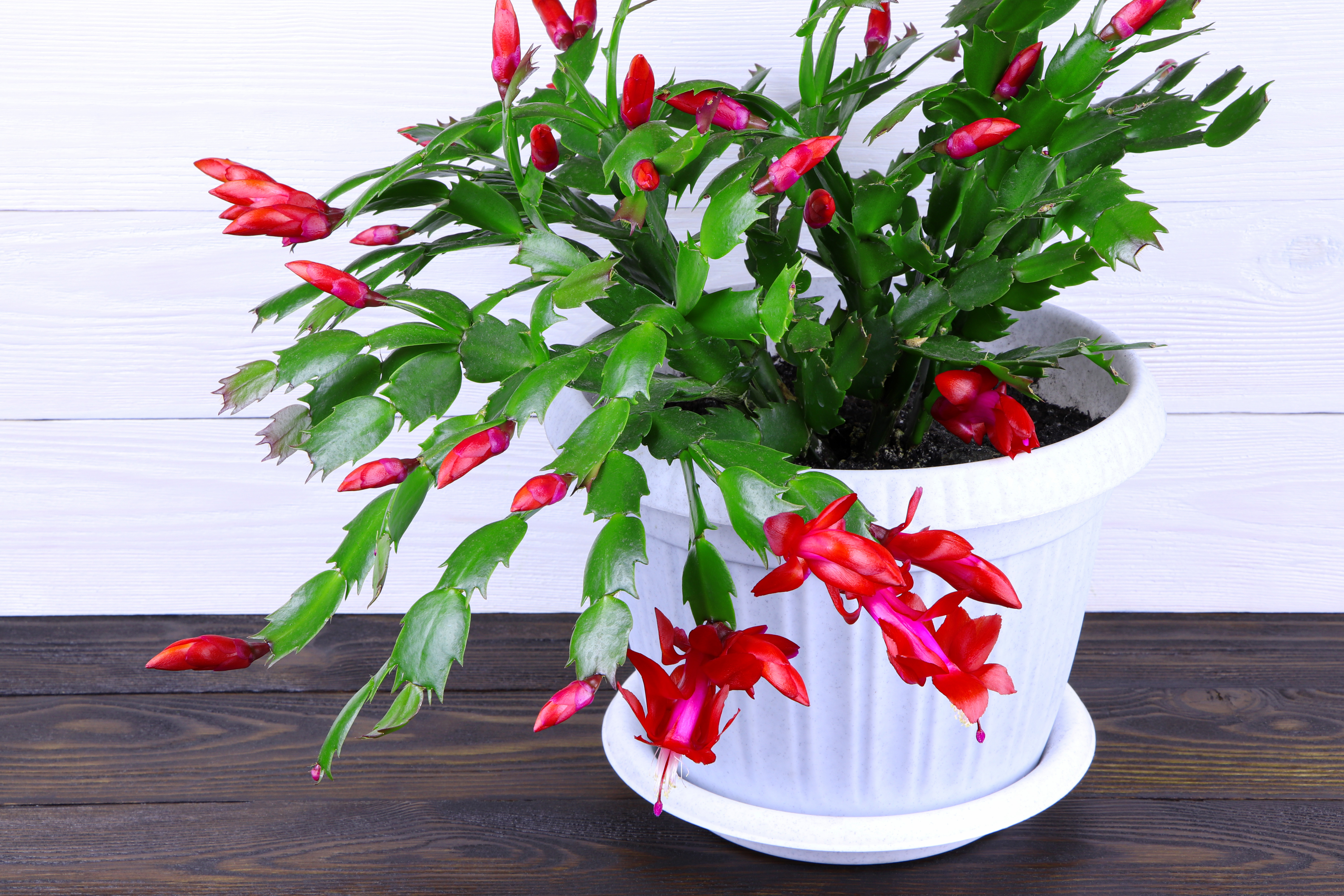
There may be a few reasons that cause a Christmas cactus to bloom and not bud. It may be a sign of stress and there may be a few things causing this.
"Holiday Cacti may drop their buds if they’re stressed, so if you see flower buds form but drop off the plant before they have a chance to open, take a look at the environment and see if there’s something that could be stressing them," explains Justin. "For example, over- or underwatering can stress a plant enough that it drops buds. Big swings in temperature can also cause bud drop, so if you have it in a cool room and bring it to a heated room, that could also explain it."
The expert also notes that prolonged exposure to temperatures over about 85F may potentially cause the plant's bud to drop. The best way to stop this from happening is to avoid drafts, heating vents, and drafty windows, as Justin says this can shock the plant.
FAQs
Why is My Christmas Cactus not Flowering?
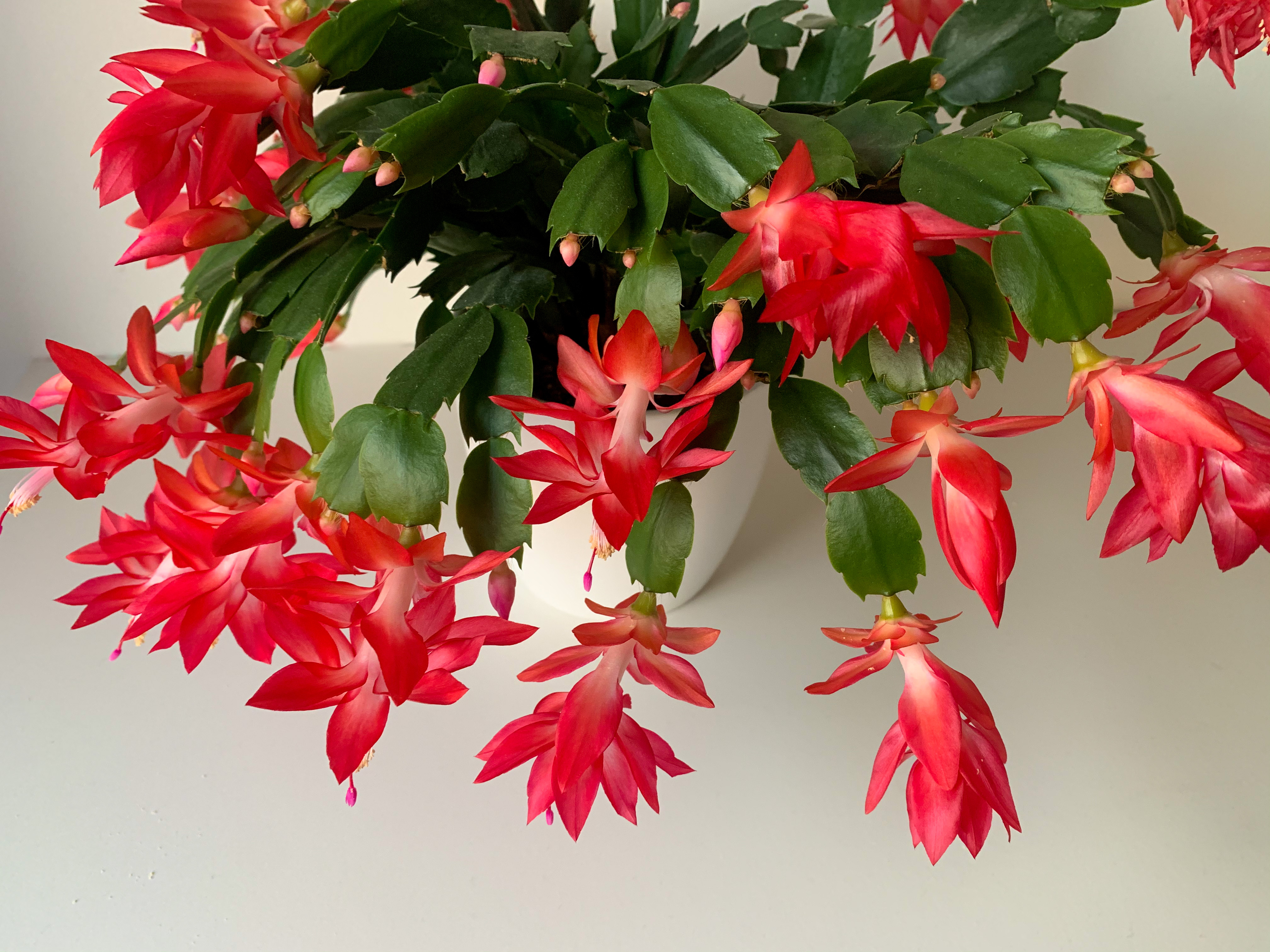
If your Christmas cactus is struggling to flower, Justin says this may be due to:
1) Insufficient light - If it doesn’t get enough light during the growing season, it won’t have the energy it needs to produce blooms.
2) Lack of budding conditions - "If your Holiday Cactus doesn’t have cool temperatures at night, it’ll have a harder time blooming," says the expert. "If you keep it in a spot where it’s 75F day and night, for example, it may not be able to bloom. The same goes for day length — if it gets a lot of illumination after dark (particularly if it doesn’t cool off at night), it may not be able to form buds."
3) Stress - "Just like stress can make it drop its buds, environmental stress can keep it from budding. If it frequently stays too wet or too dry, for example," notes Justin. "Or if it’s struggling from really low relative humidity levels or drafty conditions."
When Does a Christmas Cactus Usually Bloom?
As it states in its name, this abundant flower often finds its blooms in the winter. Justin adds: "Because days get noticeably shorter and temperatures drop as autumn transitions to winter, this is when the plant usually starts to initiate buds — leading to flowering over the winter season here in North America. So we typically see the plants naturally flower sometime between November and January."
How many times a year will a Christmas cactus bloom?
Want to see continuous blooms a few times a year? Well, you can!
Justin notes: "If your plant has good care — abundant light, the right watering, good humidity levels, etc, it can bloom a couple of times per year if you provide it with cool night temperatures and long, dark nighttime conditions."
He continues: "If you have a situation like a guestroom that’s closed off at night so there’s no light after dark and it stays cooler than the rest of the house, it’s not uncommon for it to rebloom again in early spring."




!["[T]he First and Fifth Amendments Require ICE to Provide Information About the Whereabouts of a Detained Person"](https://images.inkl.com/s3/publisher/cover/212/reason-cover.png?w=600)


